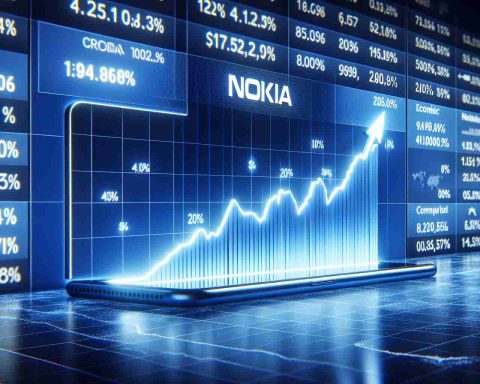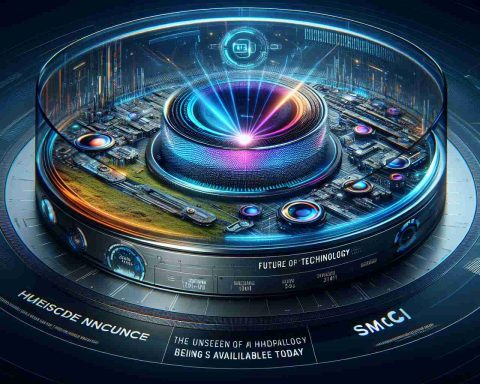From past innovations to modern marvels. In an era where smartphones have become an integral part of daily life, it’s intriguing to reflect on the humble beginnings of these devices. The concept models like IBM’s “Simon” from 1994 and Nokia’s “Nokia 9000 Communicator” from 1996 laid the groundwork for what was to come. However, the real turning point arrived with the debut of the iconic “iPhone” in 2007, ushering in an era of touch screen smartphones that revolutionized the industry.
Insights into Smartphone Usage Trends. Recently, a survey conducted by Nabit among 1,000 participants focused on smartphone usage shed light on intriguing statistics. A staggering 96.3% of respondents claimed to own smartphones, highlighting their widespread adoption across demographics. When questioned about the primary functions they utilize on their devices, categories like camera, calls, and emails emerged as popular choices among users.
Challenges and Longevity. While new smartphone models flood the market at astonishing rates, the longevity of these devices remains a concern for both consumers and manufacturers. With an average lifespan of 3 to 4 years, signs such as sluggish performance and rapid battery drain signal the impending need for replacement. However, proactive measures like avoiding overcharging and exposure to water can potentially extend a smartphone’s lifespan to over 5 years, mitigating the need for frequent upgrades.
Enter Nabit’s “1000-Person Survey.” Offering a unique platform for gathering insights, Nabit’s survey tool taps into a diverse pool of respondents, including homemakers, for comprehensive data collection. With features like customizable questionnaires and quick turnaround times, businesses can leverage this service for efficient market research endeavors.
Unlocking the Power of Data. Whether exploring consumer preferences or conducting sentiment analysis, Nabit’s “1000-Person Survey” equips businesses with essential tools for informed decision-making. By harnessing the collective wisdom of participants, organizations can gain valuable insights that drive strategic growth and innovation.
Embrace the Future of Market Research. As the digital landscape evolves, tools like Nabit’s survey service offer a gateway to deeper consumer understanding and market trends. By embracing data-driven approaches, businesses can stay ahead of the curve and adapt to changing consumer behaviors effectively. Join the league of forward-thinkers and unlock the potential of insightful market research with Nabit’s innovative solutions.
The Next Wave of Mobile Phone Evolution: Advancements and Challenges
As we delve deeper into the evolution of mobile phones, one cannot overlook the significant technological advancements that have shaped the industry in recent years. While the introduction of touch screen smartphones marked a pivotal moment, subsequent innovations have continued to redefine the capabilities and functions of these devices.
New Frontiers in Mobile Phone Technology
One notable advancement is the integration of artificial intelligence (AI) and machine learning algorithms into mobile phones. These technologies enable devices to adapt to user behavior, personalize experiences, and enhance overall efficiency. Features like voice assistants, predictive text input, and facial recognition are just a few examples of how AI is revolutionizing the user experience.
Extended Lifespan and Sustainability
In the quest for sustainable technology practices, the prolongation of a mobile phone’s lifespan has become a key focus area. Manufacturers are exploring ways to design devices that are not only durable but also easily repairable and upgradable. Initiatives promoting device longevity, such as modular components and software updates for older models, aim to reduce electronic waste and promote a more environmentally conscious approach to mobile phone usage.
Key Questions and Challenges
1. How can mobile phone manufacturers strike a balance between innovation and sustainability to address the growing issue of electronic waste?
Balancing the demand for cutting-edge features with sustainable practices poses a significant challenge for manufacturers. Finding ways to design products that meet consumer expectations while minimizing environmental impact remains a critical consideration in the industry.
2. What role does data privacy and security play in the evolution of mobile phones?
With increasing connectivity and data utilization, concerns surrounding privacy and security have become paramount. Efforts to enhance encryption, implement biometric authentication, and strengthen data protection measures are ongoing to mitigate risks associated with mobile phone usage.
Advantages and Disadvantages
Advantages:
– Enhanced user experience through AI-driven features
– Extended lifespan through sustainable design practices
– Improved data security and privacy measures
– Greater connectivity and functionality for users
Disadvantages:
– Rapid technological obsolescence leading to frequent upgrades
– Environmental impact of electronic waste disposal
– Privacy concerns with increased data collection and sharing
In conclusion, the evolution of mobile phones continues to shape the way we interact with technology and each other. By addressing key challenges, embracing technological advancements, and prioritizing sustainability, the mobile phone industry can pave the way for a more inclusive and environmentally conscious future.
Explore further insights on mobile phone advancements and industry trends at Mobile Industry Insights.




























